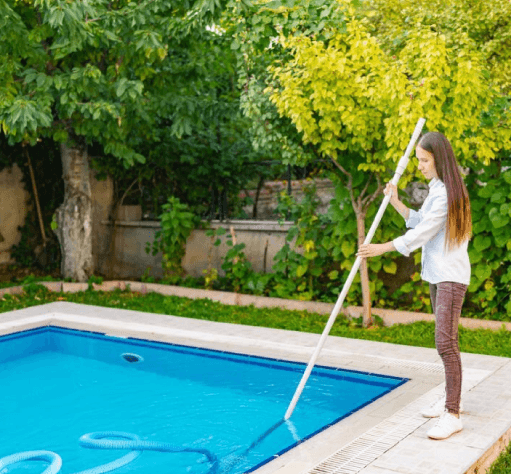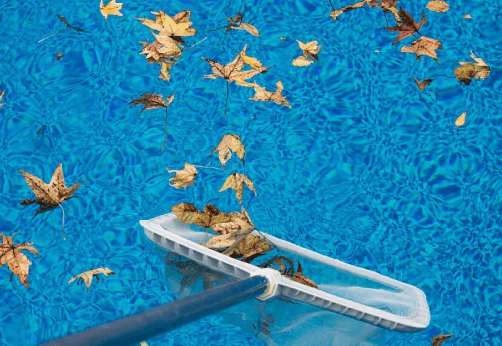How to maintain fiberglass pools in Texas?
You have probably read a lot of basic information about maintenance for swimming pools, but the vast majority are about those made with concrete, whose materials require more care because it is prone to accumulate fungi, algae and bacteria, but have you ever wondered what maintenance a swimming pool needs? fiberglass to be clean and in optimal condition?
In this new blog post from Pools Premium, the experts in fiberglass pools in Texas, we will tell you how to maintain your fiberglass pool. Let's get started!
Fiberglass is a solid, smooth material that does not accumulate bacteria, algae or fungi, so pool maintenance is easier, since it will be based on removing impurities and keeping the water at adequate levels.

1
Clean the cover
If your pool is outside, you need a cover, in this way you will maintain the temperature of the water and prevent it from getting dirty with external agents such as tree leaves, dirt or dust. So, the first step is to clean this cover daily or every third day if you see it clean, use a brush with nylon bristles and a little water to scrub the surface.
2
Vacuum the pool water
If you still do not have a vacuum cleaner for your fiberglass pool, we recommend you purchase one because it will make cleaning easier. You only have to pass it over the surface of the pool, especially on the steps, wading pools, spa area and ponds, with this you will be able to remove much of the dirt adhered to the most used surfaces.

3
Remove leaves and debris that you find floating in the water
If you do not have a cover, or at the end of the day of use of the pool, removing the floating garbage with a net will help prevent excessive contamination of the water and often cause turbidity. These nets will not only help you remove the trash that is on the surface of the water, but also the one that is on the bottom by stirring up the water.
4
Analyze water chemistry
The chemical analysis of the water will allow you to measure the pH of the water and the chlorine levels and, with this, determine the amount of chemical products that you will need for cleaning. The ideal is to keep the pH at 7.6 and the chlorine at 3.0, this to prevent the water from burning the skin, hurting the eyes of the users, or having an unpleasant odor.
To analyze the water you only need an analysis kit, which only requires small samples and gives you reliable results so that you can make the best decision for the water in your pool and the benefit of its users.
5
Keep the filter clean
In addition to the use of chemical products to clean your pool, we recommend having a filter to catch the garbage that sinks to the bottom. Being so important, the filter must also be washed, and for that you can remove it from the pool and clean it manually, or use the backwash system if you have automatic cleaning equipment.
What chemicals to use for cleaning fiberglass pools?
As experts in fiberglass pools in Texas, we recommend you use:
Chlorine disinfectants.
Chlorine is essential for the maintenance of your pool. It is a disinfectant that helps eliminate pathogenic microorganisms such as bacteria and viruses that cause diseases. There is a wide variety of chlorine-based chemicals, which you will find in liquid, pill and powder forms. Of course, make sure that the level remains in a range of 2 to 3 ppm (parts per million) to prevent the water from becoming cloudy, having a bad smell, or microorganisms growing inside it.
Superchlorination.
Also known as shock treatment, it is a technique that should preferably be carried out by a professional since it consists of adding an amount of chlorine up to 10 times the recommended amount, in combination with another nitrogen-based substance. This treatment is used to eliminate microorganisms found in the water and can be done once a week or every 15 days, depending on how often the water is used and the number of people who go swimming.
Algaecides.
They are chemical products that prevent the growth of algae on the pool surfaces, and it is only recommended to apply them if the cleaning methods described above are not enough to prevent their appearance.
Coagulants.
They are chemicals that retain small particles in the water and cause cloudiness.

At Pools Premium we hope that this information is useful to you and allows you to keep your pool in optimal conditions. If you are looking for fiberglass pools in Texas, do not hesitate to contact us to request your quote, we will gladly assist you.

